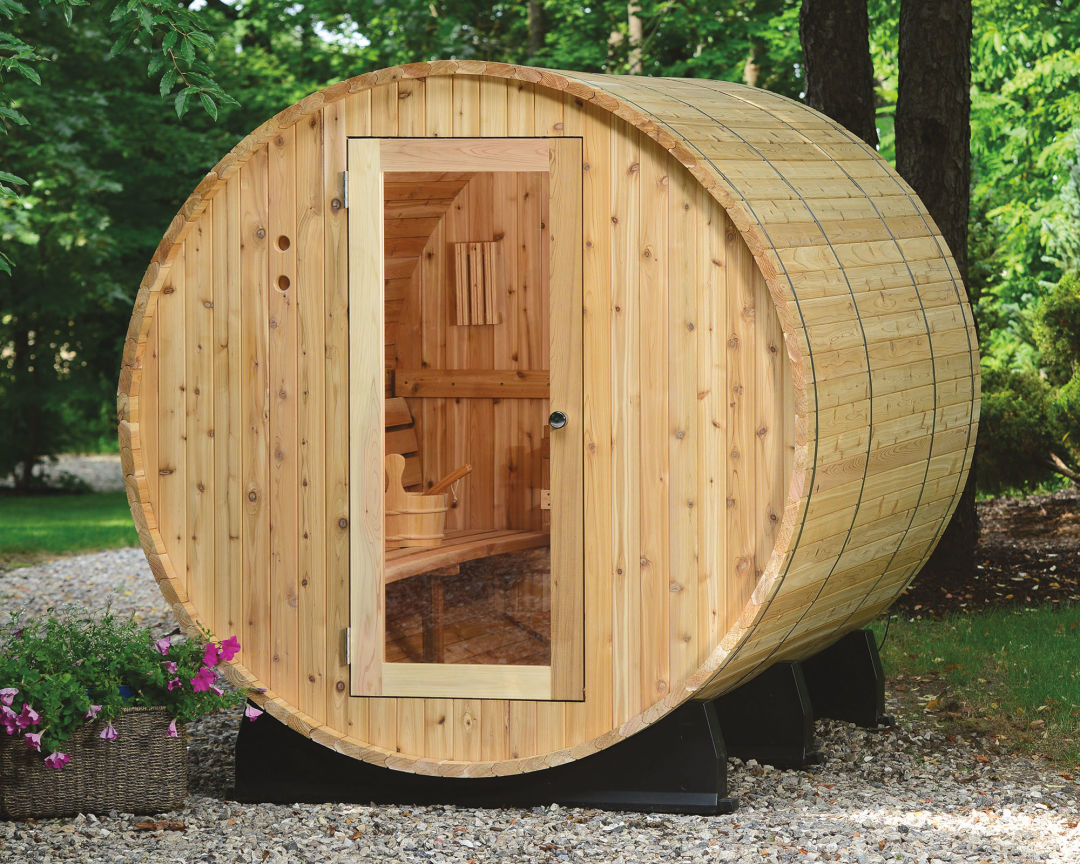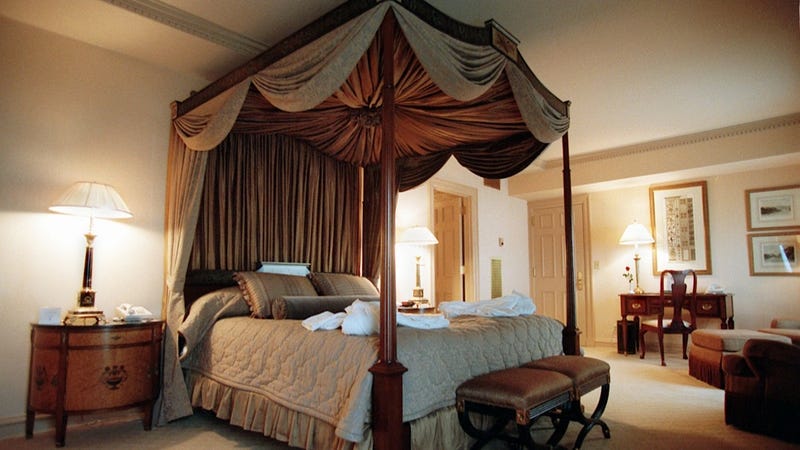Betsy Cross wanted a hot tub. Her husband, Will Cervarich, did not.
“I’m not a big hot tub guy. Like, at all,” says Cervarich. “I was like, ‘Just for the record, I will never use it.’ So we started talking about it, and we were like, ‘Well, what about a sauna?’”
The compromise turned out to be a good decision. A while back, the duo, by day owners of local boutique Betsy & Iya, splurged on a DIY outdoor sauna from Michigan-based Almost Heaven. (Brands like Cedarbrook and SaunaFin make similar products.) The company ships all the necessary pieces to your door, leaving you to assemble the barrel like Ikea furniture. Instant sauna? More or less. Compared to, say, a basement sauna, it’s easier to install and doesn’t take up any space in your house.
“I really do love going outside and having to walk through the [yard] to get to it,” Cervarich says. “I love the contrast of hot and cold in the winter. I’m excited for that. When I’m done, I come in [the house] and take a full cold shower.”
And what if friends and neighbors want to join in? (Cross and Cervarich’s model can fit four at a time.)
“I like to be naked,” says Cervarich. “There’s some people that I would be comfortable with naked in there.”
Sound invigorating? Here’s how to get started on your own.
Build the barrel. Unless you want it to roll away (new idea: mobile sauna!) the sauna will need a hard, level surface. Cervarich built a brick platform. Installation of the sauna itself is not complex but is somewhat labor intensive. (“Their brochure is like, ’You and a friend can set it up in one to two hours,” says Cervarich. “It was more like four to six.”) The two end caps of the barrel arrive assembled and sit upright opposite from each other. Build the horizontal slats around them until you complete the cylinder. Two metal bands wrap around the barrel and are tightened to keep the shape. Add the heater (powered, in this case, by a cable the couple had an electrician run from the house) and benches inside, and voilà!
Add a roof. The wood of the sauna is not, er, static. It expands and contracts with the the seasons and as it gets wet or dries out. When it rains during the warmer months, Cervarich says the wood can shrink to the point where you get drips inside the sauna. He recommends building a roof over it to avoid this problem, and also help protect it from the elements.
Maintain it ... or not. Cervarich says beyond regularly wiping down and vacuuming the inside—the walk through the yard brings in some dirt and dead bugs—there isn’t too much maintenance involved. However, if you’re concerned about keeping the long-term appearance fresh, sealing the exterior wood and regularly oiling it, as you would a cutting board, wouldn’t be a bad idea.
View the full article here at Portland Monthly






 Founded in 2014, Carly Nance and Rachel Bentley started The Citizenry as a socially conscious home decor brand that partners with master artisans around the world to create modern, globally inspired designs. From leather butterfly chairs handcrafted in Argentina to blankets woven in the mountains of Peru, The Citizenry brings the world’s best craftsmanship directly to consumers online.
Founded in 2014, Carly Nance and Rachel Bentley started The Citizenry as a socially conscious home decor brand that partners with master artisans around the world to create modern, globally inspired designs. From leather butterfly chairs handcrafted in Argentina to blankets woven in the mountains of Peru, The Citizenry brings the world’s best craftsmanship directly to consumers online.
 flagship stores for high-fashion brands that were flooded with selfie-takers from the go. Using bold colors and “wow moments” such as a massive dome made of gold leaf for the
flagship stores for high-fashion brands that were flooded with selfie-takers from the go. Using bold colors and “wow moments” such as a massive dome made of gold leaf for the

 Student loan debt in the United States has more than doubled over the past decade to about $1.5 trillion, and the Federal Reserve now estimates that it is cutting into millennials’ ability to buy homes.
Student loan debt in the United States has more than doubled over the past decade to about $1.5 trillion, and the Federal Reserve now estimates that it is cutting into millennials’ ability to buy homes.